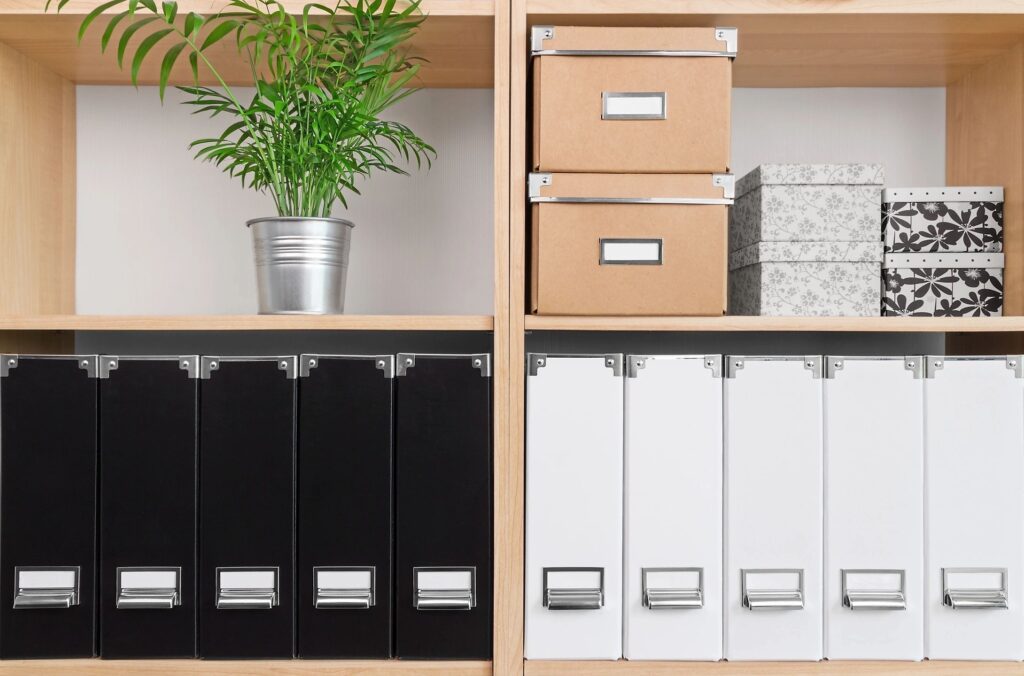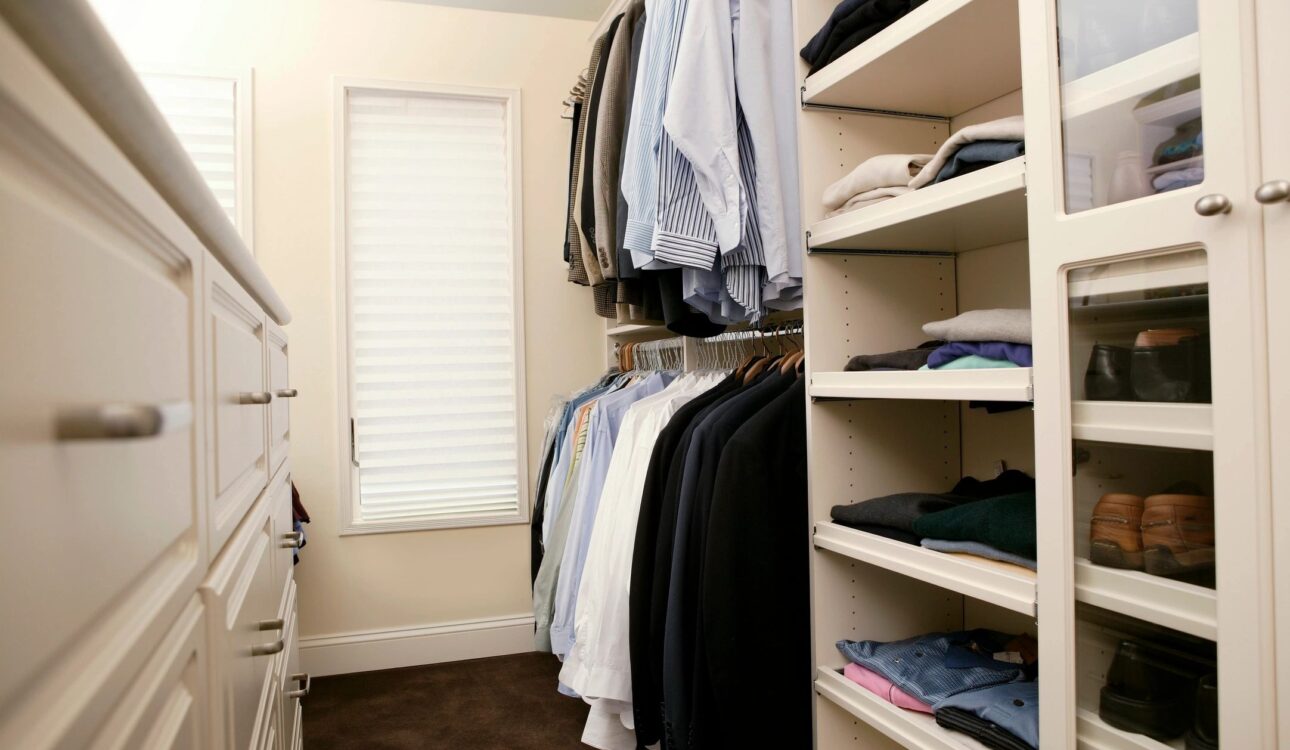In our busy lives, it’s easy to accumulate clutter and end up with a chaotic living space. Decluttering can help improve your home’s appearance and your mental clarity.
Here are ten tips to help you transform your home into a more organized and peaceful place.
Decluttering is more than just a cleaning task; it’s a journey towards a simplified life where every item in your home has a purpose and a place.
Whether you’re overwhelmed by a lifetime’s accumulation of possessions or just trying to tackle a messy desk, decluttering is adaptable to fit any space or lifestyle. No matter your circumstances, these tips are designed to cater to you and your unique needs.
Following these structured tips will teach you how to methodically clear out the unnecessary, optimize your living space, and maintain a clutter-free environment. This serene environment will make your home feel like a retreat, a place of calm and relaxation.
With these tips, you’ll discover how to efficiently declutter your home and maintain a system that keeps the mess at bay and supports a more organized lifestyle moving forward.
So, let’s embark on this transformative journey and unlock the full potential of your living space.
Start with a plan
Embarking on a decluttering journey without a plan is like navigating a ship without a compass. The first step to a successful decluttering process is to set clear, achievable goals and establish a roadmap that guides your efforts. Here’s how you can lay the groundwork for a successful decluttering project:
Setting Realistic Decluttering Goals
Begin by assessing the scope of your clutter. Walk through each room and note areas that feel particularly chaotic or stress-inducing. Set specific, measurable goals for each space.
For instance, rather than a vague ambition like “clean the garage,” aim for targeted tasks such as “sort all tools into newly labeled storage bins.” Setting achievable goals ensures that each decluttering session produces visible results, boosting your motivation to continue.
Creating a Decluttering Checklist
A checklist is a declutterer’s best friend. It breaks down your goals into actionable steps and provides a sense of direction. Start by listing the rooms or areas in your home that need attention. Under each room, write down tasks such as “sort through the bookshelf” or “organize the junk drawer.” Prioritize these tasks based on the severity of clutter or how frequently the space is used.
Here’s a simple example of what a part of your checklist might look like:
Kitchen
- Organize the pantry, grouping items by category.
- Declutter the countertop, leaving only frequently used appliances.
Bedroom
- Go through the wardrobe, setting aside clothes that no longer fit or are worn out.
- Organize the top of the dresser, and keep only essential items.
This structured approach keeps you focused and allows the task to become manageable. Checking off items as you complete them can also give you a sense of accomplishment and encourage you to keep going.
By starting with a well-thought-out plan, you lay a solid foundation for your decluttering journey. This maximizes your productivity during each decluttering session and ensures that your efforts lead to a sustainable, clutter-free environment.

Declutter Room by Room
Tackling your entire home at once can be daunting. By breaking the task into smaller, room-specific projects, you can manage your efforts more effectively and see progress without feeling overwhelmed.
Here’s how to approach decluttering, one room at a time.
Strategies for Tackling Different Areas of Your Home
Each room in your home serves a different function and thus will require a unique approach to decluttering. For instance, the kitchen and living room might accumulate daily-use items. At the same time, bedrooms might gather personal belongings that are harder to let go of.
Kitchen: Start by removing all items from cabinets and drawers. Check expiration dates and usability of kitchen gadgets. Organize items back into cabinets by frequency of use, with everyday items on lower, more accessible shelves.
Living Room: This room often serves multiple purposes, so focus on maintaining transparent surfaces and proper storage for items like remote controls, magazines, and toys. Use decorative baskets or furniture with built-in storage to keep commonly used items handy but out of sight.
Bathroom: Discard expired products and those you no longer use. Invest in organizers for drawers and cabinets to keep essentials like toiletries and towels neat and easily accessible.
Specific Tips for High-Clutter Zones
High-clutter zones require special attention. Here are some tips to handle these areas:
Kitchen: Use drawer dividers for utensils and stack shelves inside cabinets to maximize vertical space. Store small appliances in cabinets to keep countertops clear.
Closets: Implement a seasonal rotation of clothes to keep your closet manageable. Use slim, non-slip hangers for more space and better organization. For smaller items like belts and scarves, use hooks or specialty racks.
Focusing on one room at a time lets you methodically clear out clutter and reorganize each space to suit its purpose. This makes the task more manageable and allows you to customize organizing solutions that will be easy to maintain in the long run.
Adopt the Right Mindset
Successfully decluttering your home requires more than physical effort; it involves a mental shift towards minimizing and prioritizing what truly adds value to your life.
Here’s how you can adopt the right mindset for decluttering.
Embracing Minimalism in Daily Life
Minimalism isn’t about owning the least possible amount of things; instead, it’s about ensuring that the things you own serve a purpose or bring joy.
Start by reflecting on your possessions and asking yourself whether each item is necessary or beneficial. This practice helps prevent unnecessary future acquisitions, maintaining a decluttered home in the long run.
Ask yourself: Does this item serve a current purpose? Does it make me happy? If the answer is “no” to both, it might be time to let it go.
Psychological Benefits of Reducing Clutter
Decluttering has profound psychological benefits, such as reducing anxiety and improving focus. A clear space often leads to a clear mind, allowing for better relaxation and productivity within your home.
Reduce Stress: Clutter is visually distracting and can make us anxious or unsettled. A decluttered space can promote a more relaxing and calming environment.
Enhance Focus: Without excess items, it’s easier to focus on tasks at home, whether working, cooking, or spending time with family.
Adopting a mindset that values quality over quantity empowers you to make decluttering decisions that enhance your home’s functionality and well-being. This mindset supports the initial purge and helps sustain a clutter-free environment.
Use the Four-Box Method
One of the most structured approaches to decluttering is the Four-Box Method. This technique helps you make decisive and organized choices about what to keep, donate, sell, or toss.
Here’s how to implement this method in your decluttering routine.
Explanation of This Sorting Technique
The Four-Box Method involves four categories:
- Keep: Items you use regularly and need to stay in the room where they were found.
- Donate: Items in good condition that you no longer use but could be helpful to someone else.
- Sell: Items that are valuable enough to sell.
- Toss: Items that are broken, damaged, or no longer usable.
Set up four boxes or bins labeled with these categories in your decluttering room. As you evaluate each item, decide which box it belongs to. This method forces immediate decision-making, which speeds up the decluttering process and prevents items from being shuffled from one place to another.
How to Decide What to Keep, Donate, Sell, or Toss
- Keep: Ask yourself if the item was used last year and if it will be used shortly. If yes, it goes in the Keep box.
- Donate: If the item is in good condition but has not been used in over a year, consider donating it to someone who might need it more.
- Sell: For items that have significant resale value, such as electronics, designer clothes, or collectibles, use platforms like eBay, Craigslist, or local Facebook sale groups.
- Toss: Dispose of items responsibly by recycling when possible or using appropriate disposal methods for items that can’t be donated or sold.
Using the Four-Box Method helps clear the clutter and ensures that each item is handled appropriately. It’s an effective way to make space in your home and handle possessions responsibly.

Implement Smart Storage Solutions
Once you’ve decluttered, the next step is to organize what remains functionally and sustainably. Implementing smart storage solutions can transform your living spaces into models of efficiency and ease.
Here’s how to maximize your storage while maintaining style and functionality.
Innovative Storage Ideas for Small Spaces
In smaller living spaces, every inch counts. Utilize innovative storage solutions that enhance space without adding clutter:
- Under-bed storage: Store off-season clothing, extra bedding, or rarely used items in drawers or boxes under the bed.
- Over-the-door organizers: These can be used in any room and are great for everything from shoes to accessories and cleaning supplies.
- Floating shelves: Use vertical space on walls for books, plants, and decor, which keeps floors clear and rooms looking open.
Tips on Using Vertical Space and Hidden Storage
Maximizing vertical space and finding hidden storage areas can help keep your home tidy and organized:
- Wall-mounted racks: These are ideal for kitchens or garages. They can hold tools, pots, pans, or cleaning supplies, freeing up cabinet and counter space.
- Furniture with built-in storage: Look for ottomans, couches, and beds with built-in compartments. These are perfect for storing linens, toys, or other household items.
- Behind-the-door shelves: Narrow shelving units mounted on the back of doors can store pantry items, spices, or beauty products without taking up room space.
By choosing the proper storage solutions for your space and lifestyle, you can ensure that everything has a place, making it easier to keep your home organized and clutter-free. These solutions help you store your belongings efficiently and keep them accessible and in good condition.
Maintain Daily Decluttering Habits
Developing daily decluttering habits is crucial to prevent clutter from building up again. These habits will help you maintain the cleanliness and organization of your home with minimal effort over time.
Here’s how you can incorporate daily routines into your life to keep clutter at bay.
Daily Routines to Keep Clutter at Bay
Creating and sticking to a simple daily routine can significantly reduce the chances of clutter accumulating:
- Five-Minute Tidy Up: Spend five minutes each morning or evening clearing surfaces in high-traffic areas. This can be as simple as putting dishes away, hanging up coats, or returning books to shelves.
- Mail Management: Deal with mail daily. Recycle junk mail immediately, file essential letters, and manage bills and other paperwork to prevent piles from forming.
- Nightly Resets: Before bed, quickly sweep through common areas to put items back in their designated places. This practice helps you start the next day with a clean slate.
Importance of Making Decluttering a Family Habit
Decluttering should be a shared responsibility if you live with others. Encouraging everyone in the household to participate can make maintaining order much easier:
- Assign Specific Tasks: Give each family member a small, manageable task that contributes to the overall tidiness of the home. This could be as simple as ensuring shoes are neatly arranged or putting toys away after play.
- Regular Mini-Declutter Sessions: Set aside a time each week for the entire family to declutter a designated area for 15-30 minutes. This can be a fun and productive family activity that keeps the home tidy and teaches organizational skills.
Integrating these daily decluttering habits into your routine ensures that your home remains an orderly sanctuary, reducing stress and making the space more enjoyable.

Seasonal Decluttering Rituals
Adopting seasonal decluttering rituals can help maintain a clutter-free home by addressing different areas and items that may not be part of your daily or weekly cleaning routines.
Here’s how to incorporate seasonal decluttering into your regular cleaning habits.
How to Incorporate Decluttering into Seasonal Cleaning
Seasonal decluttering involves a more thorough clean-up and organization that complements the changing needs of your household throughout the year:
- Spring Cleaning: Focus on deep cleaning areas that aren’t part of your regular cleaning routine, such as behind appliances and inside closets. It’s also a great time to sort through winter clothes and decide what to keep, donate, or discard.
- Summer: Prepare for summer by decluttering outdoor areas and organizing summer gear. Check sports equipment, outdoor furniture, and gardening tools, removing or repairing items as needed.
- Fall: As the weather cools, declutter summer items and prepare for the winter months. This is an excellent time to sort through school supplies and seasonal decorations.
- Winter: Before the holiday season, declutter to make room for holiday decorations and gifts. After the holidays, focus on organizing new items received and recycling or donating old, replaced, or unused decorations.
Tips for Handling Holiday Decorations and Seasonal Gear
Managing seasonal items effectively can prevent them from becoming clutter:
- Storage Solutions: Use clear, labeled bins for holiday decorations to make finding and storing items easier each season. Stackable bins that fit together can save space and keep items dust-free.
- Rotation System: Rotate seasonal clothing in and out of your main closet to keep your wardrobe manageable—store off-season clothing in vacuum-sealed bags or bins to protect it and save space.
Seasonal decluttering rituals help keep your home tidy and organized and prepare you for each season’s unique needs, making it easier to enjoy your home year-round
Your Path to a Clutter-Free Home
Embarking on the journey to declutter your home can initially seem daunting, but it becomes achievable and enjoyable with the right strategies and mindset. By implementing the ten essential decluttering tips discussed in this article, you can transform your living spaces into organized, functional, and serene environments.
Decluttering is not just about removing unwanted items—it’s about making room for what truly matters in your life. Whether you adopt the Four-Box Method, engage the whole family in a declutter day, or set up smart storage solutions, each step you take makes a significant difference in the comfort and functionality of your home.
Start small, be consistent, and gradually incorporate these practices into your daily routine. The benefits extend beyond just a cleaner home; they include increased productivity, reduced stress, and a greater sense of peace and well-being.
We hope these tips inspire you to start your decluttering journey today. A more organized home is not just a dream—it’s within your reach!

